There are two sides to every sale. Each side must meet certain criteria if a deal is to move forward.
On one side is the buyer. Of course, not all accounts are of equal value to your organization. And with limited hours in the day, sales reps must focus their time and energy on those that are most likely to convert. As such, most sales organizations have developed an ideal customer profile (ICP), which is a model of the key qualities that make an account a great fit for your company’s products or services. These qualities can include annual revenue, employee range, industry, customer base, organizational maturity, and geography, among a myriad of others. Sales and marketing then qualify accounts based on how they measure up to this ICP.

On the other side is the seller. There’s no doubt there are certain skills and behaviors common to all successful sellers. However, few organizations take the time to define their ideal rep profile (IRP).
What is an ideal rep profile – and why is it imperative to improving your organization’s sales readiness strategy? Read on to find out.
What is an ideal rep profile?
In a perfect world, all of the reps on your team would be top performers. But that’s not reality. Instead, most sales teams are composed of reps with a wide range of experience, strengths, and weaknesses.
So, what makes top performers stand out among the rest? Usually, there are a number of common competencies and selling skills top performers have. Those skills are correlated with success in the field.
As the name suggests, an ideal rep profile (IRP) is a profile of a rep that’s likely to succeed at a given organization. Much like an ICP includes characteristics that make the customer “ideal,” an IRP defines the competencies and skills a rep must have to regularly close deals and meet (or even surpass) quota. For example, the best sellers use consistent messaging during role-plays – and they limit their use of filler words. Obviously, that’s just a small sampling of the skills necessary for success.
Of course, it’s possible to document your IRP in a document or spreadsheet. However, here at Mindtickle, we’ve recently released the Mindtickle Readiness Index, which allows you to record your IRP right in the Mindtickle platform so you can work toward closing knowledge gaps – and getting more reps ready to sell.
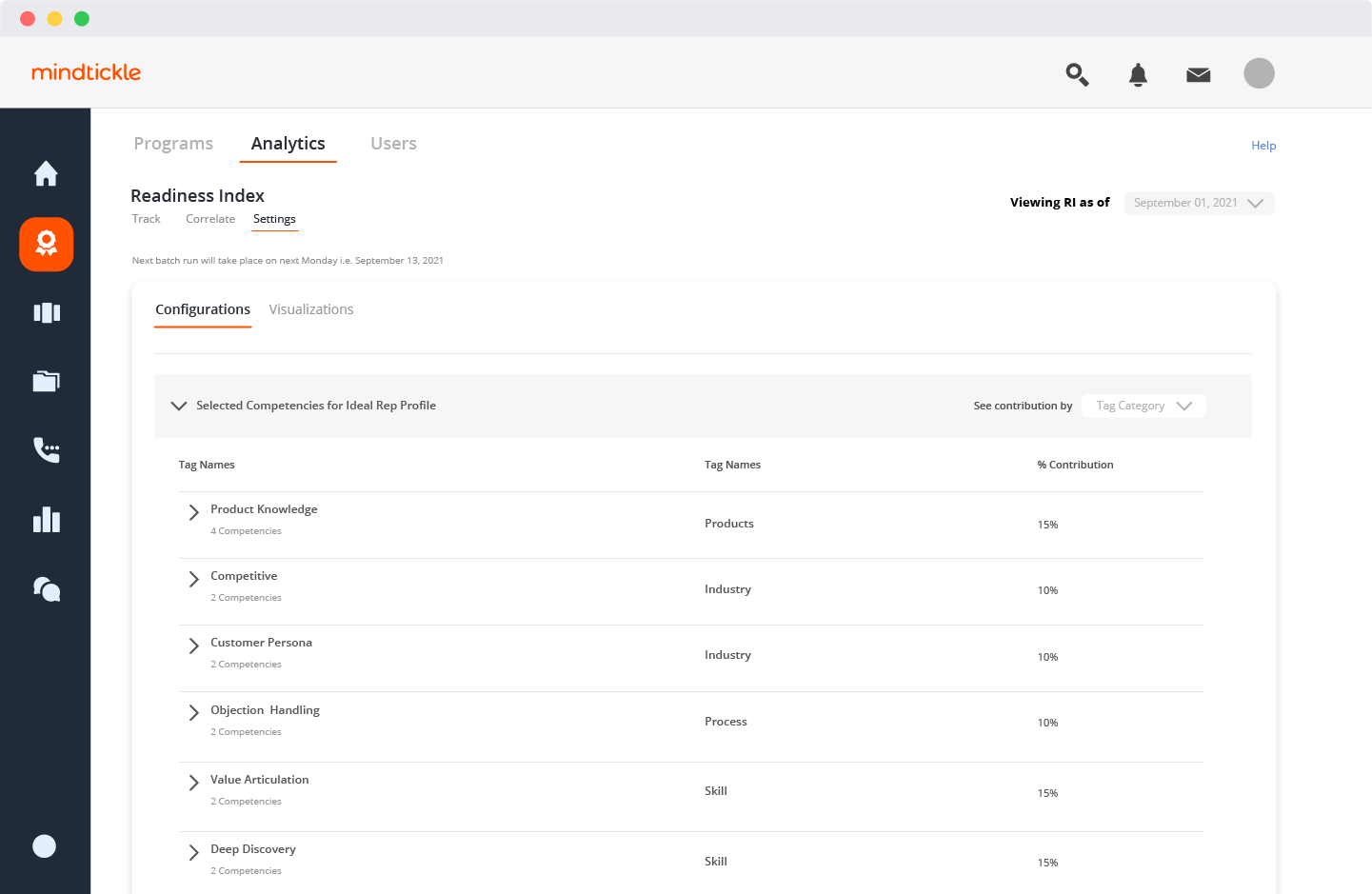
Why do you need an ideal rep profile?
Sales leaders are busy, with a to-do list a mile long. As such, you’ve got to focus on the projects and initiatives that have the highest payoff in terms of your ultimate goal: revenue growth. So, is it worth the time to create an IRP?
In a word, yes. In fact, the IRP should be the North Star for your entire sales readiness program.
Oftentimes, organizations use a spray and pray approach to sales readiness. They deliver the same generic training and coaching to all sellers – without much regard for each seller’s strengths and weaknesses. And they hope sellers will retain the information – and apply it in the field.
Creating an IRP helps ensure each seller is getting the education, content, and coaching they need to learn and are able to master the skills and competencies that are correlated with sales success. So, an IRP is the first step toward creating more peak performers and driving greater revenue growth for your organization.
How to start creating more ideal reps
Many sales organizations focus on delivering great onboarding and ongoing training programs to their go-to-market teams. And for good reason. The best sales training can improve the performance of an individual seller by 20%, on average.
Today, most sales leaders accept the 80/20 rule as inevitable and concede to the fact that the majority of revenue will always be driven by a small number of star sales reps.
These leaders continue to use a one size fits all approach to sales readiness — where all reps check off the same boxes, regardless of their skills, experience, and competencies. The result? The same handful of great reps continue to hit (or surpass) their targets – while the majority of the others don’t.
But it doesn’t have to be that way. A more effective approach to readiness involves delivering content, training, and coaching based on your IRP – as well as the individual needs of your reps. With this approach, it’s very much possible to develop and prepare every seller in your organization to win.
Here’s how to start taking this approach:
Create your IRP
Creating an ideal rep profile is the first step toward a more effective readiness approach. This involves documenting the skills and competencies that are correlated with positive sales outcomes as learned from your best performers.
Each organization is different — and therefore IRPs will vary from company to company.
We’ve highlighted the competencies below that, in general, make for a great sales rep. As you build out the profile of an ideal rep at your organization, you may want to get more granular about specific knowledge areas that relate to your industry or product.
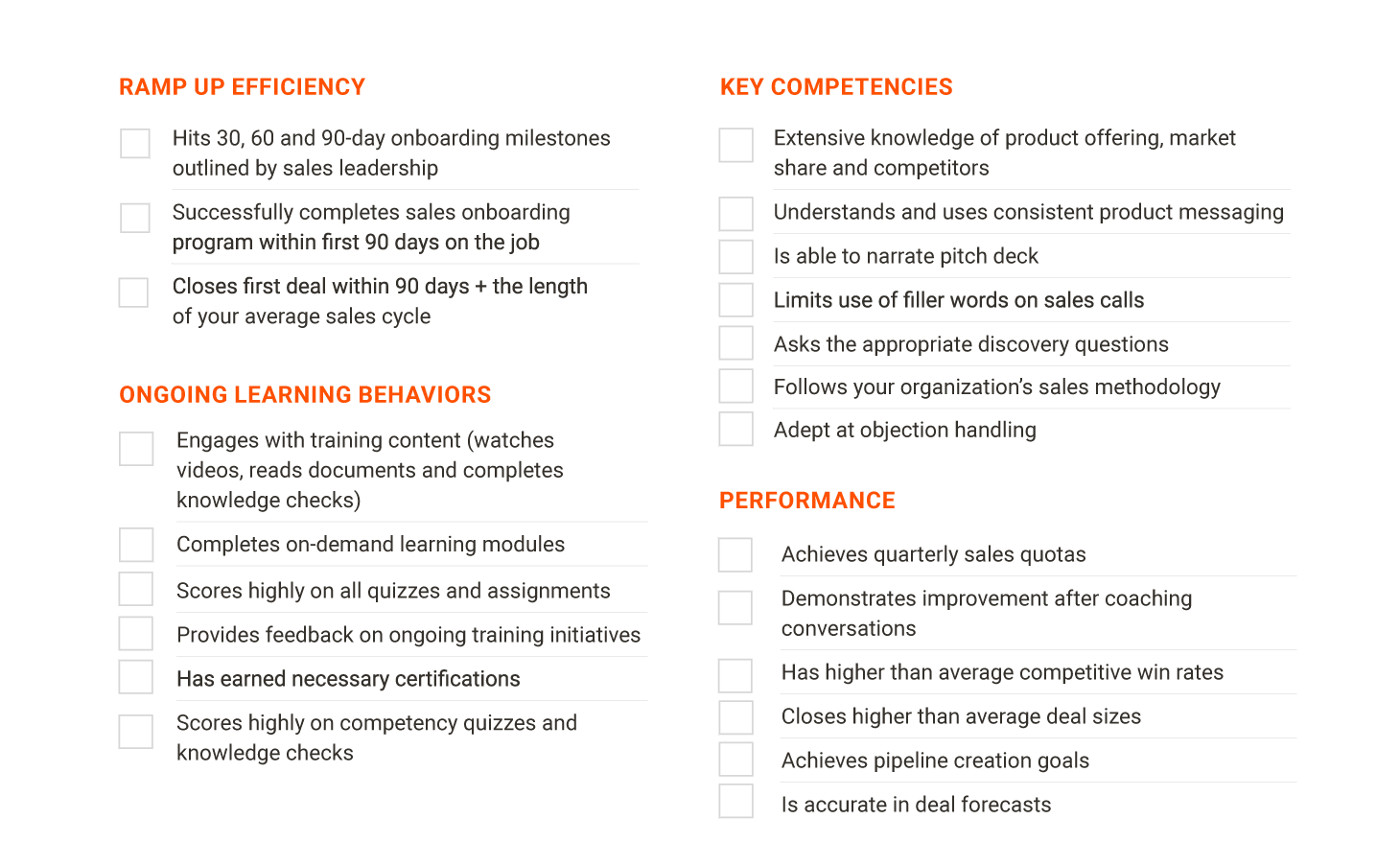
Organizations can leverage the Mindtickle Readiness Index to record their ideal rep competencies and skills right within the platform.
Measure reps’ skills against your IRP
Once you’ve established your IRP (and recorded it into the Mindtickle Readiness Index), you must understand how your reps stack up against these benchmarks. It’s essential to understand where each rep is shining – and where there are knowledge gaps standing in the way of success.
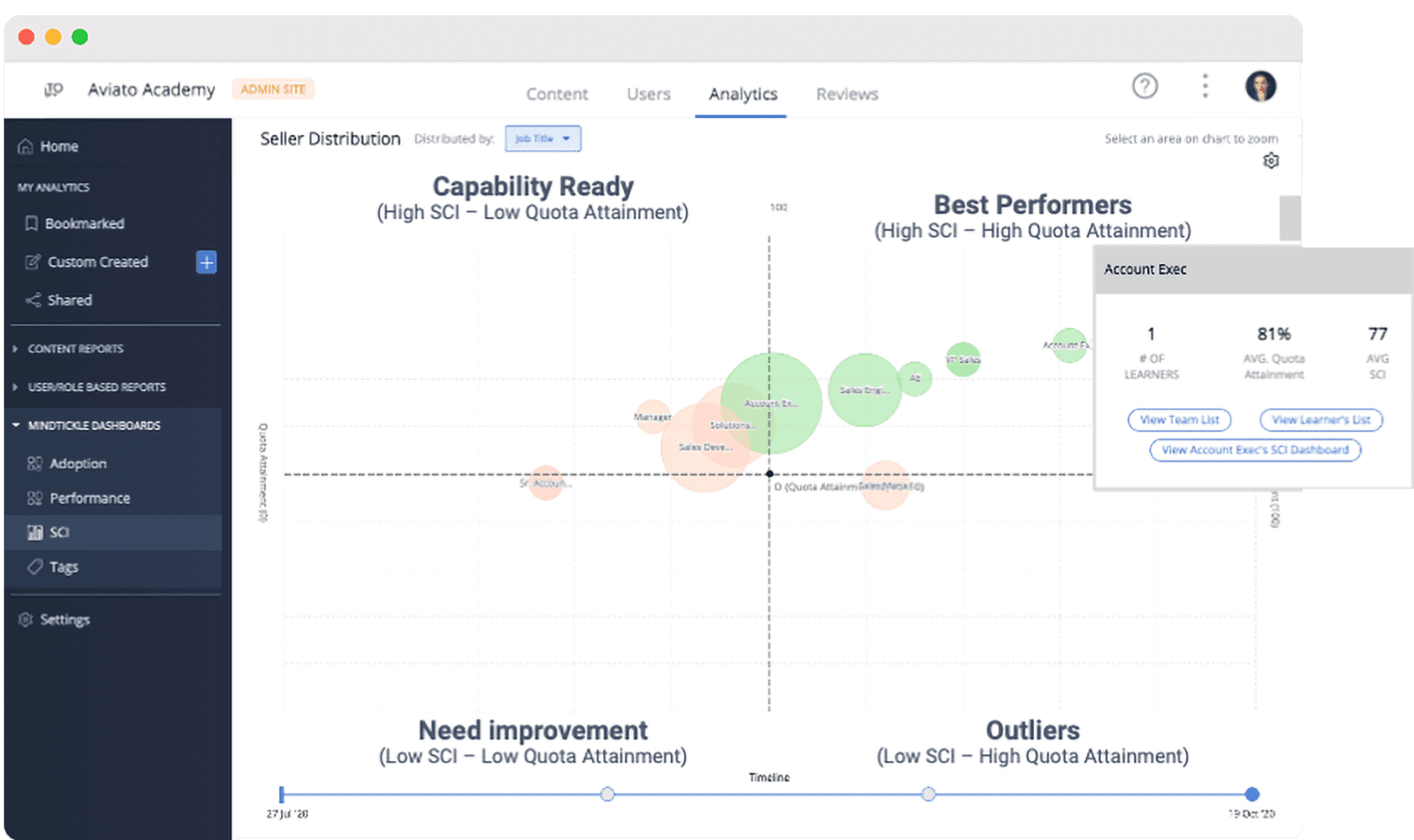
Deliver customized training and coaching
After knowledge gaps are identified, sales enablement teams and frontline managers can create and deliver customized training and coaching that fills those gaps – and get more reps ready to sell. This will help you create more peak performers on your team by delivering education, content, and coaching based on each rep’s individual needs. This could take many forms, including in-person training, microlearning, quizzes, role-plays, and one-on-one coaching, among others.

Measure progress and optimize accordingly
It’s key to determine whether training and coaching are moving reps closer in alignment with the IRP. To do this, sales leaders must continuously measure reps’ skill development and in-field application. One important way to determine whether reps are applying the skills they’ve learned when interacting with buyers is to leverage a conversation intelligence solution. These tools make it easy to measure performance against the skills defined in the IRP. Then, sales managers can provide individualized coaching and training to improve problem areas standing in the way of winning deals.
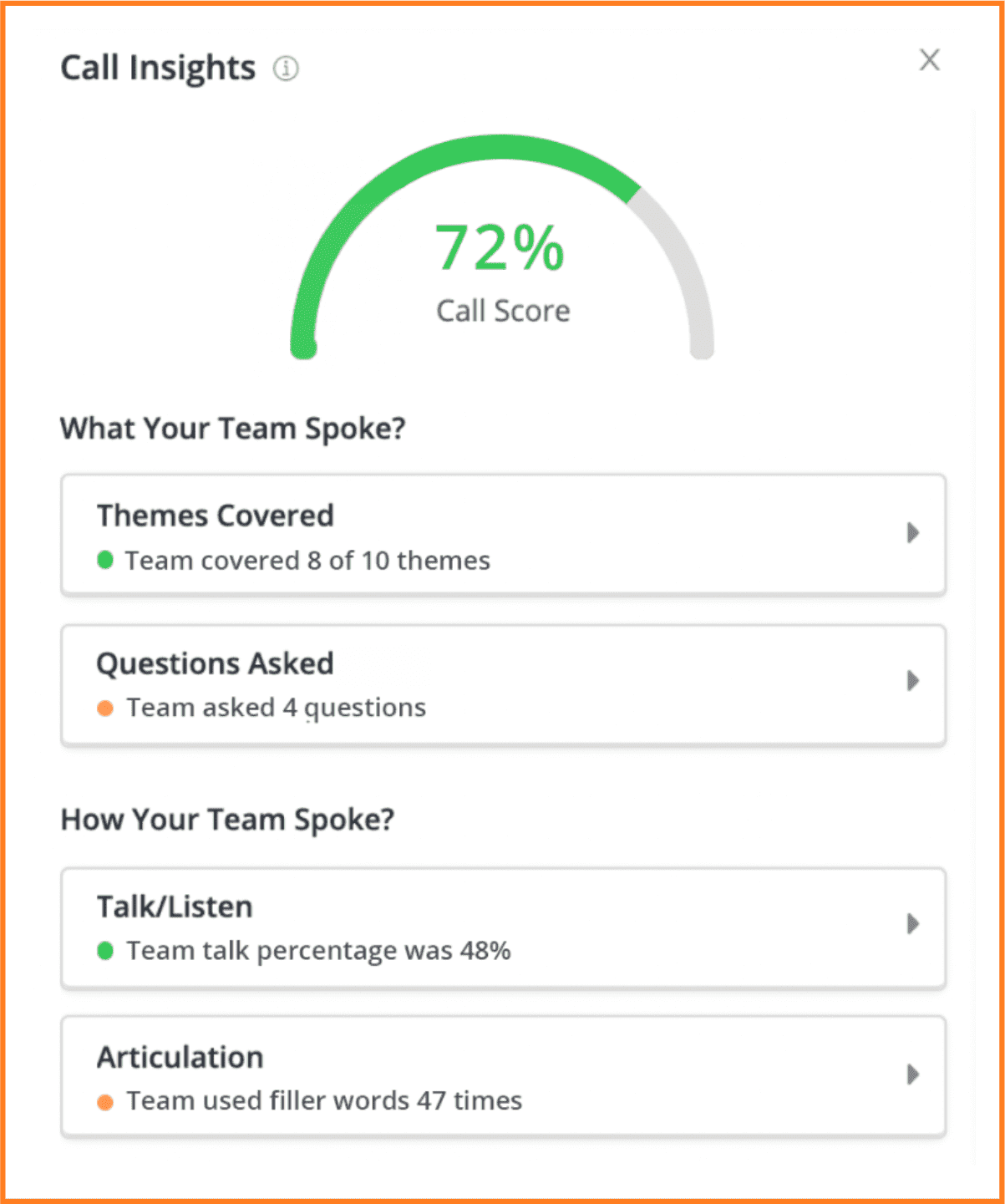
Drive continuous sales excellence
Buyers have high expectations. As such, organizations must ensure reps are always ready to meet (and exceed) those expectations.
Sales organizations must make sales readiness a top priority. And true readiness begins when sales teams have a firm grasp of not only their ideal customer profile but also their ideal rep profile. With the Mindtickle Readiness Index, it’s very much possible to do away with the 80/20 rule – and instead, aim to get all reps ready to sell.

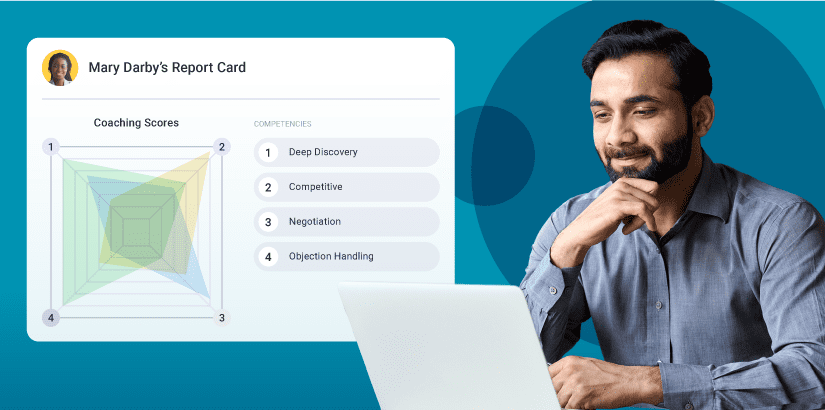

 By Rahul Mathew
By Rahul Mathew

